So the trick with stuff like this is to make the conditional formatting work in Excel, and then just copying the formula.
I created a new workbook with a new worksheet, where the columns B and H match yours (more or less).
The applied conditional formatting rule does exactly what you want. It could be simplified to this: formula = '=$H2=""' but then technically empty cells in column B would be bolded as well with your data.
import xlsxwriter
with xlsxwriter.Workbook("testing123.xlsx") as workbook:
# create worksheet
worksheet_tc = workbook.add_worksheet()
# set column names
worksheet_tc.write(0, 1, "Name1")
worksheet_tc.write(0, 7, "Name2")
# write some data
for x in range(1, 20):
if x % 3 != 0:
worksheet_tc.write(x, 1, f"Something{x+1}")
if x % 2 == 0:
worksheet_tc.write(x, 7, f"Something{x+1}")
# add format
format_bold = workbook.add_format({"bold": True})
# the formula below checks if the cell in column B contains anything,
# and if the cell in column H is empty
formula = '=AND($B2<>"", $H2="")'
worksheet_tc.conditional_format(
"B2:B5000", {"type": "formula", "criteria": formula, "format": format_bold}
)
resulting Excel sheet:

resulting conditional formatting rules on the sheet:



